Instruction
Analyzing golfers’ “favorite” shots on Trackman

In a previous article, I showed you how the face and path interact in order to produce curvature on a golf ball. In this article we will examine the numerical data from the Trackman while I hit a few of our “favorite” shots!
The only thing I want you to focus on here is the relationship between the face and the path. When the face and the path diverge, curvature is created. The new rules of ball flight tell us that the ball starts in the direction of the face and curves away from the path. You will see these factors demonstrated below.
In the shot diagrams below: the blue line represents the path, the red arrow represents the face angle at impact, the purple line is the curvature of the golf ball, and the straight right line is your target line.
One note: Please assume that I have hit the ball in the center of the blade on each shot; thus there is no vertical or horizontal gear effect acting upon the ball the might skew the spin axis number a touch.
The Push Draw
- The path is 4.9 degrees from the inside
- The face is 2.1 degrees to the right of the target
- When the face is left of the path (-5.6 degrees) but right of the target (2.1 degrees) the ball will begin the right of the target and curve back towards the target
- Draws are hit with an OPEN face so the ball begins to the right
The Pull Fade
- The path is -3.5 degrees from out to in
- The face is -2.2 degrees left of the target
- Whenever the face is right (1.2 degrees) of the path (-3.5 degrees) with the face being left of the target (-2.2 degrees) the ball will begin left of the target and curve back to the right
- Fades are hit with a CLOSED face so the ball begins to the left of the target
The Push
- Sometimes when hitting a fade people will “hold on” to the face too much through impact and this causes the ball to begin too far right of the target and curve further away from it
- To numerically see this, you can see that the face is 11.8 degrees to the right of the target which is 13 degrees right of the path…the bigger the face to path relationship the bigger the curve in a perfect world
- When the face is right of the target the ball will begin too far to the right…to begin the ball left of the target you would need a face that is left of the target but right of the path
The Pull
- As we all know, committing to hitting a draw is tough under pressure thus allowing the club to naturally release left of the path can be an issue
- It is impossible to time the “release” of the club in the 1/10,000 of a second during impact; however, the over-emphasis of releasing the club can move the face too far left of the target and path
- The path is from the inside at 4.5 degrees while the face is -8.5 degrees left of the target which is -13.0 degrees left of the path…thus the ball starts way left and hooks even further left
- The key to learn here is that the face “releases” left of the path but NOT left of the target
The Double Cross Left
- Sometimes when hitting a fade you can get a touch handsy and pull the ball, “double-crossing” as it’s called. When this happens the ball begins left of your target and never moves back to the right
- As you can see the path is -9.8 degrees from out to in but instead of the face angle being RIGHT of the path, it is currently -3.6 degrees left of the path creating a pull hook
- As stated the ball begins in the direction of the face and curves away from the path and if you turn the face left of the path then the ball will never come back
The Over the Top Slice
- I’ve saved the best and most common of our favorite shots for last…the over the top slice!!!!
- Here you can see that the path is -9.4 degrees from out to in yet the face is 1.3 degrees right of the target which gives us a 10.8 degree difference between the face and the path
- Whenever the face is right of the path with a centered hit the ball will fall to from left to right
- Anytime you swing left your mind knows that the target is right of your path thus you will tend to “hold on” to the blade in efforts to move the ball back towards the target…this puts the face right of the target and well right of the path and this will cause the big slice we all hate
Hopefully with these few sample shots you now understand now HOW these shots are created with centered impacts. As always, when we add in gear effect from toe and heel hits it can render the face to path numbers irrelevant as they can actually counteract one another. This is the reason why using face spray to audit your impact location can help you better chart your impact point, face, path, and spin axis number in the end.
- LIKE7
- LEGIT1
- WOW0
- LOL1
- IDHT0
- FLOP0
- OB0
- SHANK1
Instruction
The Wedge Guy: The easiest-to-learn golf basic

My golf learning began with this simple fact – if you don’t have a fundamentally sound hold on the golf club, it is practically impossible for your body to execute a fundamentally sound golf swing. I’m still a big believer that the golf swing is much easier to execute if you begin with the proper hold on the club.
As you might imagine, I come into contact with hundreds of golfers of all skill levels. And it is very rare to see a good player with a bad hold on the golf club. There are some exceptions, for sure, but they are very few and very far between, and they typically have beat so many balls with their poor grip that they’ve found a way to work around it.
The reality of biophysics is that the body moves only in certain ways – and the particulars of the way you hold the golf club can totally prevent a sound swing motion that allows the club to release properly through the impact zone. The wonderful thing is that anyone can learn how to put a fundamentally sound hold on the golf club, and you can practice it anywhere your hands are not otherwise engaged, like watching TV or just sitting and relaxing.
Whether you prefer an overlap, interlock or full-finger (not baseball!) grip on the club, the same fundamentals apply. Here are the major grip faults I see most often, in the order of the frequency:
Mis-aligned hands
By this I mean that the palms of the two hands are not parallel to each other. Too many golfers have a weak left hand and strong right, or vice versa. The easiest way to learn how to hold the club with your palms aligned properly is to grip a plain wooden ruler or yardstick. It forces the hands to align properly and shows you how that feels. If you grip and re-grip a yardstick several times, then grip a club, you’ll see that the learning curve is almost immediate.
The position of the grip in the upper/left hand
I also observe many golfers who have the butt of the grip too far into the heel pad of the upper hand (the left hand for right-handed players). It’s amazing how much easier it is to release the club through the ball if even 1/4-1/2″ of the butt is beyond the left heel pad. Try this yourself to see what I mean. Swing the club freely with just your left hand and notice the difference in its release from when you hold it at the end of the grip, versus gripping down even a half inch.
To help you really understand how this works, go to the range and hit shots with your five-iron gripped down a full inch to make the club the same length as your seven-iron. You will probably see an amazing shot shape difference, and likely not see as much distance loss as you would expect.
Too much lower (right) hand on the club
It seems like almost all golfers of 8-10 handicap or higher have the club too far into the palm of the lower hand, because that feels “good” if you are trying to control the path of the clubhead to the ball. But the golf swing is not an effort to hit at the ball – it is a swing of the club. The proper hold on the club has the grip underneath the pad at the base of the fingers. This will likely feel “weak” to you — like you cannot control the club like that. EXACTLY. You should not be trying to control the club with your lower/master hand.
Gripping too tightly
Nearly all golfers hold the club too tightly, which tenses up the forearms and prevents a proper release of the club through impact. In order for the club to move back and through properly, you must feel that the club is controlled by the last three fingers of the upper hand, and the middle two fingers of the lower hand. If you engage your thumbs and forefingers in “holding” the club, the result will almost always be a grip that is too tight. Try this for yourself. Hold the club in your upper hand only, and squeeze firmly with just the last three fingers, with the forefinger and thumb off the club entirely. You have good control, but your forearms are not tense. Then begin to squeeze down with your thumb and forefinger and observe the tensing of the entire forearm. This is the way we are made, so the key to preventing tenseness in the arms is to hold the club very lightly with the “pinchers” — the thumbs and forefingers.
So, those are what I believe are the four fundamentals of a good grip. Anyone can learn them in their home or office very quickly. There is no easier way to improve your ball striking consistency and add distance than giving more attention to the way you hold the golf club.
More from the Wedge Guy
- The Wedge Guy: Golf mastery begins with your wedge game
- The Wedge Guy: Why golf is 20 times harder than brain surgery
- The Wedge Guy: Musings on the golf ball rollback
- LIKE85
- LEGIT13
- WOW6
- LOL1
- IDHT0
- FLOP4
- OB1
- SHANK8
Instruction
Clement: Stop ripping off your swing with this drill!

Not the dreaded headcover under the armpit drill! As if your body is defective and can’t function by itself! Have you seen how incredible the human machine is with all the incredible feats of agility all kinds of athletes are accomplishing? You think your body is so defective (the good Lord is laughing his head off at you) that it needs a headcover tucked under the armpit so you can swing like T-Rex?
- LIKE0
- LEGIT2
- WOW2
- LOL0
- IDHT0
- FLOP0
- OB0
- SHANK2
Instruction
How a towel can fix your golf swing

This is a classic drill that has been used for decades. However, the world of marketed training aids has grown so much during that time that this simple practice has been virtually forgotten. Because why teach people how to play golf using everyday items when you can create and sell a product that reinforces the same thing? Nevertheless, I am here to give you helpful advice without running to the nearest Edwin Watts or adding something to your Amazon cart.
For the “scoring clubs,” having a solid connection between the arms and body during the swing, especially through impact, is paramount to creating long-lasting consistency. And keeping that connection throughout the swing helps rotate the shoulders more to generate more power to help you hit it farther. So, how does this drill work, and what will your game benefit from it? Well, let’s get into it.
Setup
You can use this for basic chip shots up to complete swings. I use this with every club in my bag, up to a 9 or 8-iron. It’s natural to create incrementally more separation between the arms and body as you progress up the set. So doing this with a high iron or a wood is not recommended.
While you set up to hit a ball, simply tuck the towel underneath both armpits. The length of the towel will determine how tight it will be across your chest but don’t make it so loose that it gets in the way of your vision. After both sides are tucked, make some focused swings, keeping both arms firmly connected to the body during the backswing and follow through. (Note: It’s normal to lose connection on your lead arm during your finishing pose.) When you’re ready, put a ball in the way of those swings and get to work.

Get a Better Shoulder Turn
Many of us struggle to have proper shoulder rotation in our golf swing, especially during long layoffs. Making a swing that is all arms and no shoulders is a surefire way to have less control with wedges and less distance with full swings. Notice how I can get in a similar-looking position in both 60° wedge photos. However, one is weak and uncontrollable, while the other is strong and connected. One allows me to use my larger muscles to create my swing, and one doesn’t. The follow-through is another critical point where having a good connection, as well as solid shoulder rotation, is a must. This drill is great for those who tend to have a “chicken wing” form in their lead arm, which happens when it becomes separated from the body through impact.
In full swings, getting your shoulders to rotate in your golf swing is a great way to reinforce proper weight distribution. If your swing is all arms, it’s much harder to get your weight to naturally shift to the inside part of your trail foot in the backswing. Sure, you could make the mistake of “sliding” to get weight on your back foot, but that doesn’t fix the issue. You must turn into your trial leg to generate power. Additionally, look at the difference in separation between my hands and my head in the 8-iron examples. The green picture has more separation and has my hands lower. This will help me lessen my angle of attack and make it easier to hit the inside part of the golf ball, rather than the over-the-top move that the other picture produces.


Stay Better Connected in the Backswing
When you don’t keep everything in your upper body working as one, getting to a good spot at the top of your swing is very hard to do. It would take impeccable timing along with great hand-eye coordination to hit quality shots with any sort of regularity if the arms are working separately from the body.
Notice in the red pictures of both my 60-degree wedge and 8-iron how high my hands are and the fact you can clearly see my shoulder through the gap in my arms. That has happened because the right arm, just above my elbow, has become totally disconnected from my body. That separation causes me to lift my hands as well as lose some of the extension in my left arm. This has been corrected in the green pictures by using this drill to reinforce that connection. It will also make you focus on keeping the lead arm close to your body as well. Because the moment either one loses that relationship, the towel falls.


Conclusion
I have been diligent this year in finding a few drills that target some of the issues that plague my golf game; either by simply forgetting fundamental things or by coming to terms with the faults that have bitten me my whole career. I have found that having a few drills to fall back on to reinforce certain feelings helps me find my game a little easier, and the “towel drill” is most definitely one of them.
- LIKE12
- LEGIT2
- WOW2
- LOL0
- IDHT0
- FLOP2
- OB0
- SHANK8
-

 19th Hole1 week ago
19th Hole1 week agoDave Portnoy places monstrous outright bet for the 2024 Masters
-

 19th Hole2 weeks ago
19th Hole2 weeks agoThings got heated at the Houston Open between Tony Finau and Alejandro Tosti. Here’s why
-

 19th Hole1 week ago
19th Hole1 week agoTiger Woods arrives at 2024 Masters equipped with a putter that may surprise you
-

 19th Hole2 weeks ago
19th Hole2 weeks agoReport: Tiger Woods has ‘eliminated sex’ in preparation for the 2024 Masters
-

 19th Hole4 days ago
19th Hole4 days agoTwo star names reportedly blanked Jon Rahm all week at the Masters
-

 19th Hole3 days ago
19th Hole3 days agoNeal Shipley presser ends in awkward fashion after reporter claims Tiger handed him note on 8th fairway
-

 19th Hole3 days ago
19th Hole3 days agoReport: LIV Golf identifies latest star name they hope to sign to breakaway tour
-

 19th Hole2 weeks ago
19th Hole2 weeks agoAddiction, spinal fusion, and scam artists – Everything Anthony Kim revealed in candid interview with David Feherty

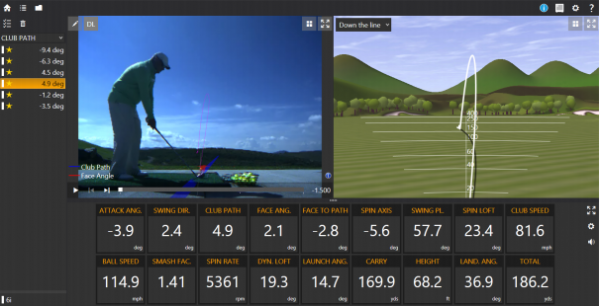
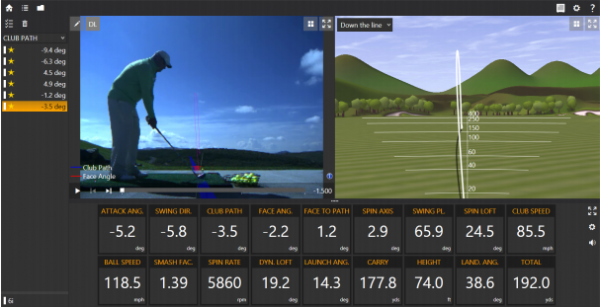
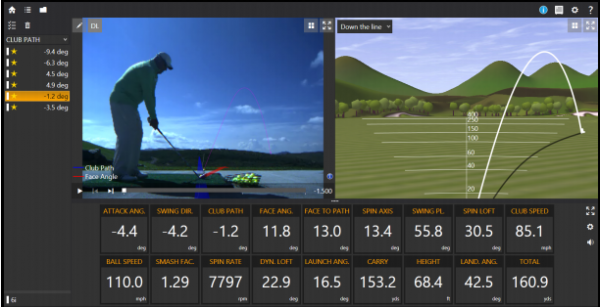
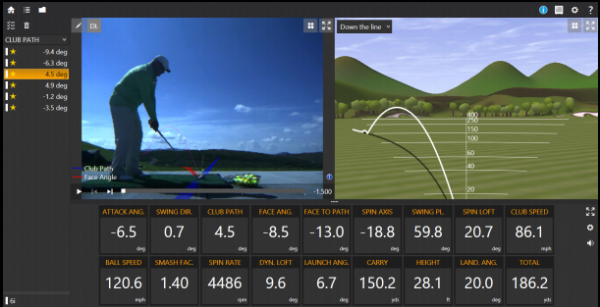
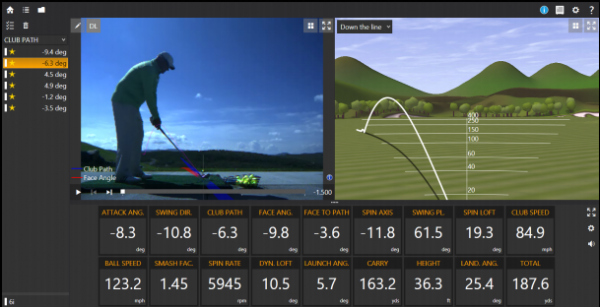
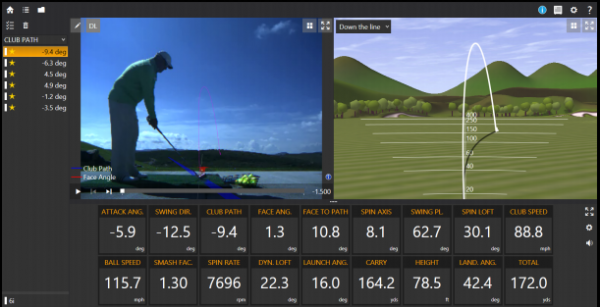















Rich
Aug 27, 2014 at 12:27 am
I don’t understand what you mean by a draw is hit with an open face. As to my knowledge the way to hit a push draw is to have the face between the original target and path. But the more the path is right the more closed the face is? Just curious as to what you mean by an open face.
chase
Aug 28, 2014 at 9:48 am
its open to the target line yet closed to the club path if that helps
Brian
Aug 22, 2014 at 12:37 am
Would love to see the numbers for the “snap hook” and “pull hook”
tom stickney
Aug 22, 2014 at 10:28 am
Snaphook would be path way left of target…face further left of path. The pull hook is shown above under the term “pull.”
Pingback: Analyzing golfers’ “favorite” shots on Trackman | Spacetimeandi.com
Jeff
Aug 18, 2014 at 8:09 pm
I was wonder if you were working on shots for a tournament what would you do in your practice to make them predictable and reliable. Would you hit a push draw and then a pull fade changing the path more than the club face for curvature of the ball or would you hit a push fade and draw so that both club paths were more similar and it was the club face angle that is changing more? I need to get tournament ready in two months for the next season in Palm Springs and I get different answers depending on which local pro I talk to.
Tom Stickney
Aug 18, 2014 at 8:40 pm
I’d practice my stock shot until it moved too much the hit the opposite one for a bit. Come see me in pd this winter. I’m at bighorn. Back in late October
hidraw
Aug 19, 2014 at 10:15 am
Thanks. That would be great.
Jeff
Aug 19, 2014 at 10:57 am
Thanks.
hidraw
Aug 18, 2014 at 8:06 pm
The push draw is my go to….and pretty much my only. Hard part about this is it creates a fairly shallow angle of attack and my miss is normally thin….good news is that thin is straight and helps keep my scores in line with a lower handicap golfer. However, there is nothing better than a solid strike with a nice divot in front of the ball. Any advice to address? Thanks!
Tom Stickney
Aug 18, 2014 at 8:40 pm
Work on your pivot.
ILMHoosier
Aug 18, 2014 at 3:15 pm
Very nice article Tom. Just out of curiosity what club were you hitting?
Tom Stickney
Aug 18, 2014 at 3:58 pm
6 iron I believe. Early am, swinging easy
Dakota
Aug 18, 2014 at 12:37 pm
I have worked at Dick’s for around the last year seeing the numbers on the launch monitor has really helped to understand a lot about the golf swing.
Tom Stickney
Aug 18, 2014 at 3:59 pm
Numbers help as long as you focus on the feeling you have to achieve them.
Philip
Aug 18, 2014 at 12:17 pm
I like the descriptions with the numbers. This seems to be something I can wrap my head around. Until now I kinda knew what I was trying to do, but not with the confidence to pull it off.
Much appreciated.
Tom Stickney
Aug 18, 2014 at 2:19 pm
Thx. I thought it would be cool to show both as well.
NaborsX
Aug 18, 2014 at 12:00 pm
Great info. Nice to see the swing feel in actual numbers. It’s always hard to get someone to understand the whole “swing right to go left” mentality.
Tom Stickney
Aug 18, 2014 at 8:40 pm
Agree